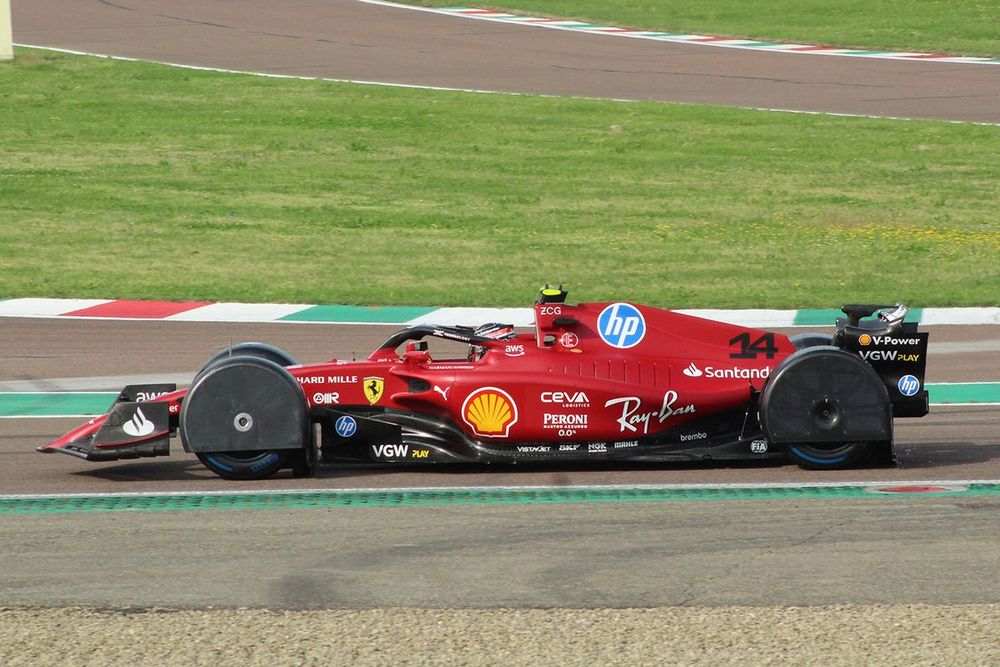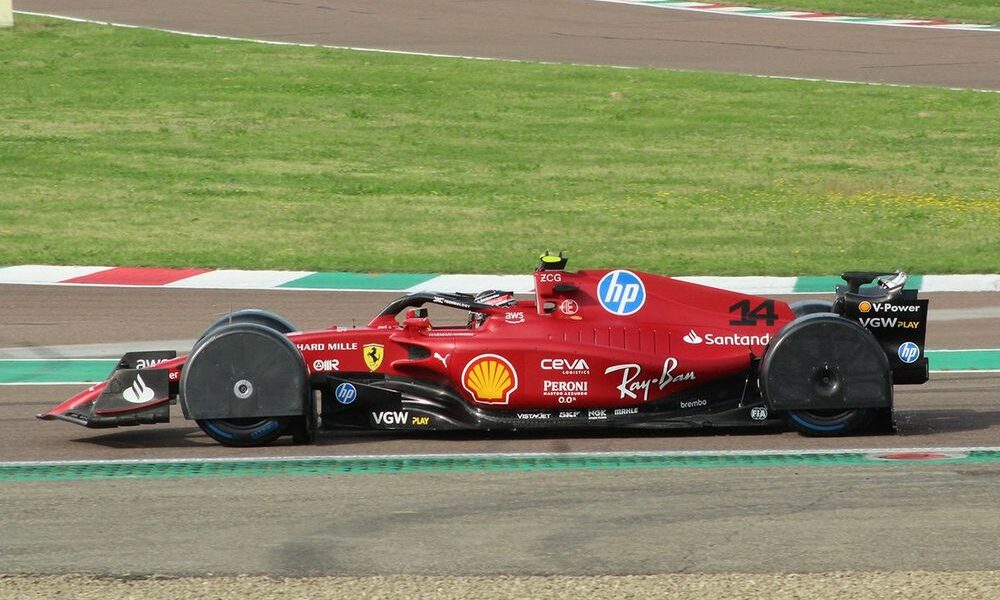Ferrari recently helped the FIA with the evaluation of a more complete wheel guard concept during runs at Fiorano to see if it could help reduce spray.
The design was much more dramatic than the original idea tried out at Silverstone last year, and Ferrari ran two cars close together to evaluate if it brought any improvement.
The latest covers were deliberately over the top because the FIA wanted to better understand how much of an improvement visibility would be if there was no spray thrown up by the wheels.
The conclusion after the test, based on video analysis, was the benefit was marginal – as there remains a tremendous amount of water thrown up by the diffuser.
The conclusion from the FIA was immediate that the wheel cover idea is no longer worth pursuing, so other options to try to help in treacherous conditions are now being evaluated.
Speaking exclusively to Autosport, the FIA’s head of single-seater matters Nikolas Tombazis said the wheel cover project was now stopped as it was not going to deliver the step-change hoped for.
“We always knew that there were two main contributing factors to the cloud of spray,” he said. “One was how much water is picked up from the ground from the diffuser, and the other one is from the wheels.

Arthur Leclerc, Ferrari F1-75 with spray guards
Photo by: Alessando Stefanini
“What we thought we’d do is try to do a total wheel cover, even beyond what would be practical, to see what is the maximum we can possibly achieve with that – in order to see whether that is the solution or not.
“The previous wheel cover test [at Silverstone last year] was way, way too flimsy and too small. And therefore I don’t think it was ever going to work.
“So we went to the maximum just to see what was the best we could achieve from the wheel covers. And while they do have a bit of an effect, they don’t have a significant enough effect to say that that’s the solution. Therefore we are back to square one.
“Let’s say that I think we’ve answered a few questions. We know where we are, but I don’t think that’s continuing as a project at the moment, as such. Now we know we need to find other ways to protect races from being cancelled.”
The influence of the venturi floor in throwing up a significant amount of water has prompted previous ideas about adding something to the diffuser to help keep the water down in this area.
However, Tombazis is sceptical about this idea, as he thinks anything done in this area would have a significant negative impact on downforce generation.
“Theoretically you could do something there, but that would be like removing all the downforce and so on. So it would be quite an issue. It’s not an easy next step, to be honest. We have to discuss it,” he said.

Arthur Leclerc, Ferrari F1-75 with spray guards, Oliver Bearman, Ferrari SF-24
Photo by: Alessando Stefanini
“But fundamentally, as a test, it [the Ferrari design] worked because it showed us what we were looking for. Sometimes tests go well and you say ‘fantastic’, and sometimes they go the other way and tell you the direction you are following is not good and you need to follow something else. That something else needs to be established now.”
Tombazis said he had a few ideas about what could be done, but did not want to go public with them yet.
But he said the hope was that, whatever the answer was, it could help on the rare occasions when conditions were especially extreme.
“We need to think of different solutions,” he explained. “Ultimately, what we want to avoid is a Spa 2021 situation where a race gets cancelled, or severely shortened, or severely delayed.
“Clearly, it’s always going to be a compromise. The wheel covers themselves were quite ugly, but if they had done a significant contribution, then we would have been perfectly happy to install them once a year if that makes a difference between cancelling a race or not.
“It was never intended to be ‘every time it’s wet we put them on’. But unfortunately, we do need to try to think of other solutions.”

